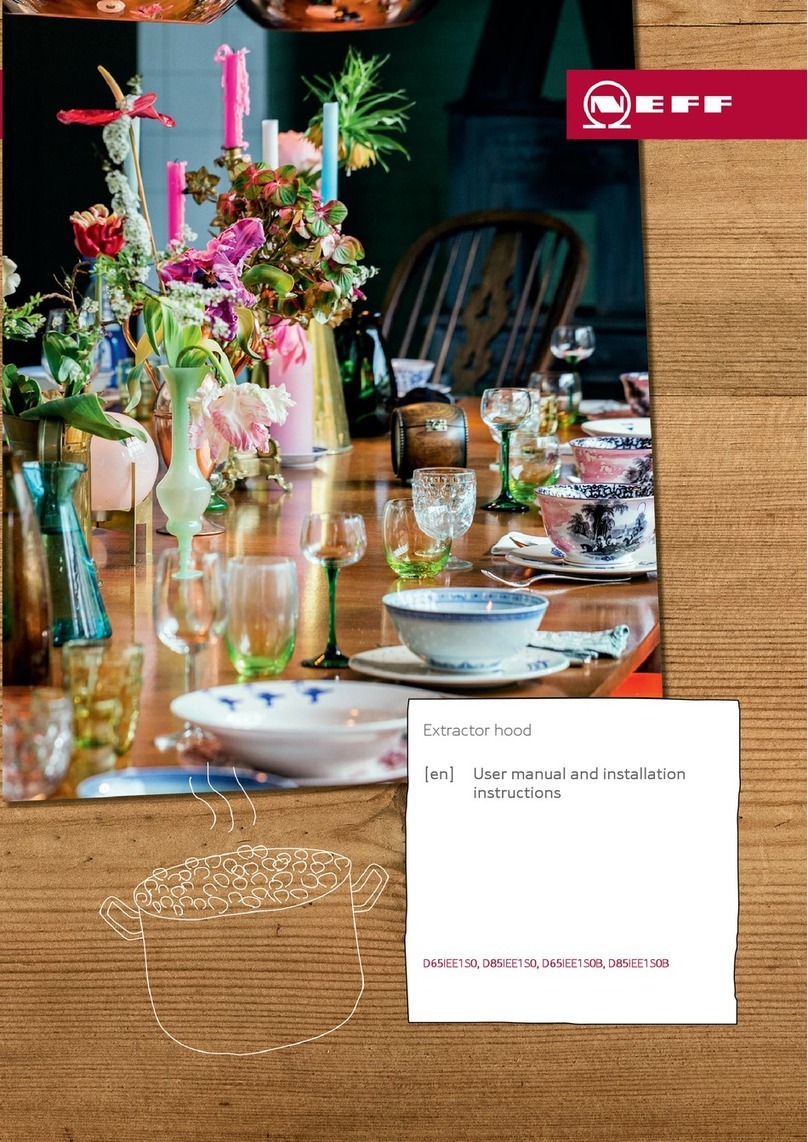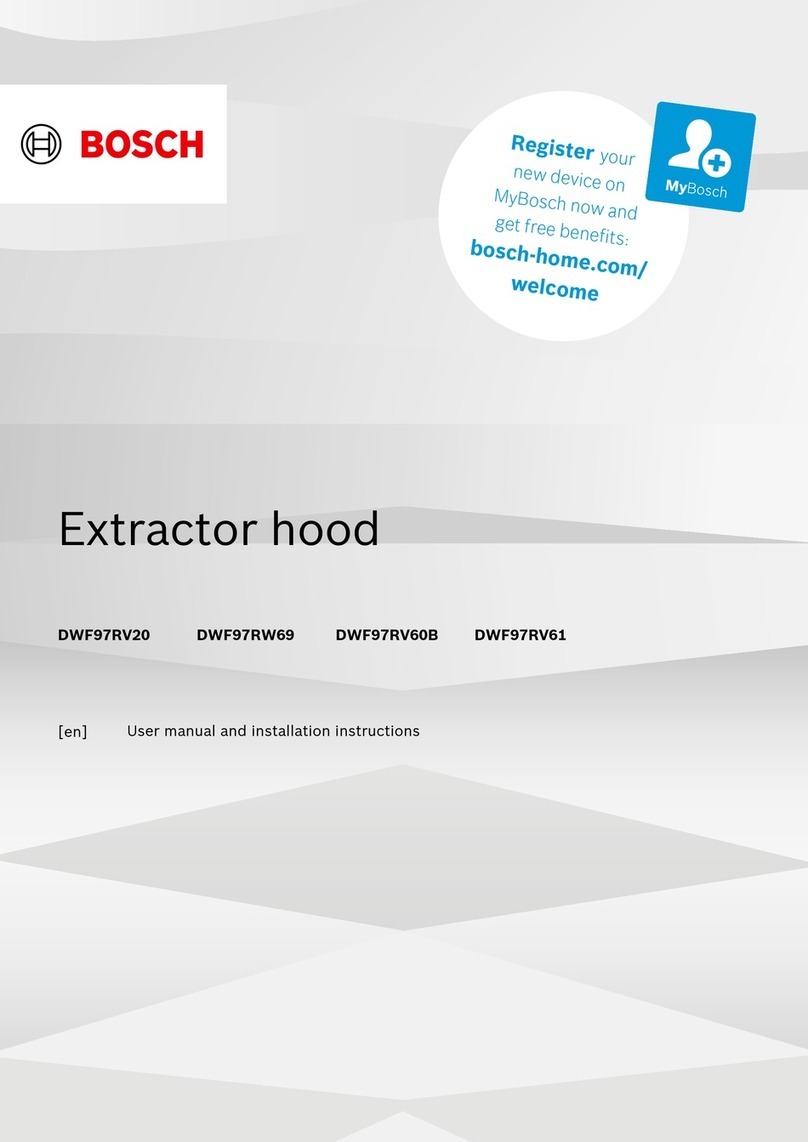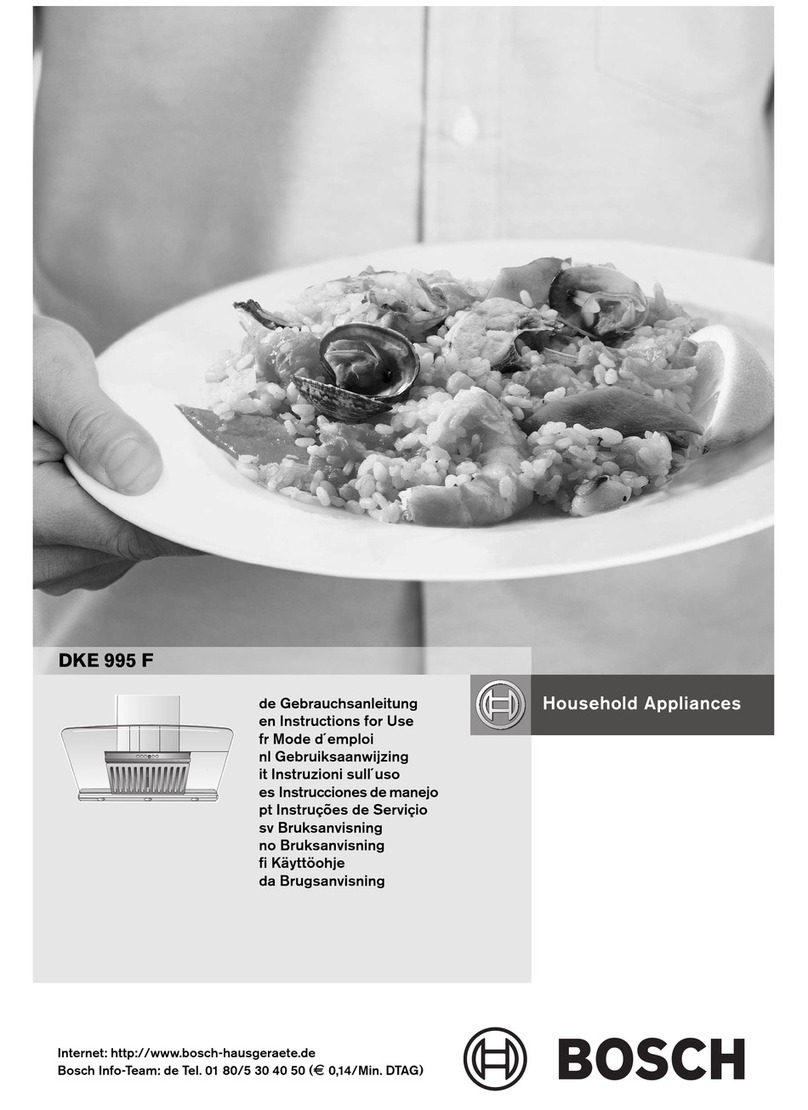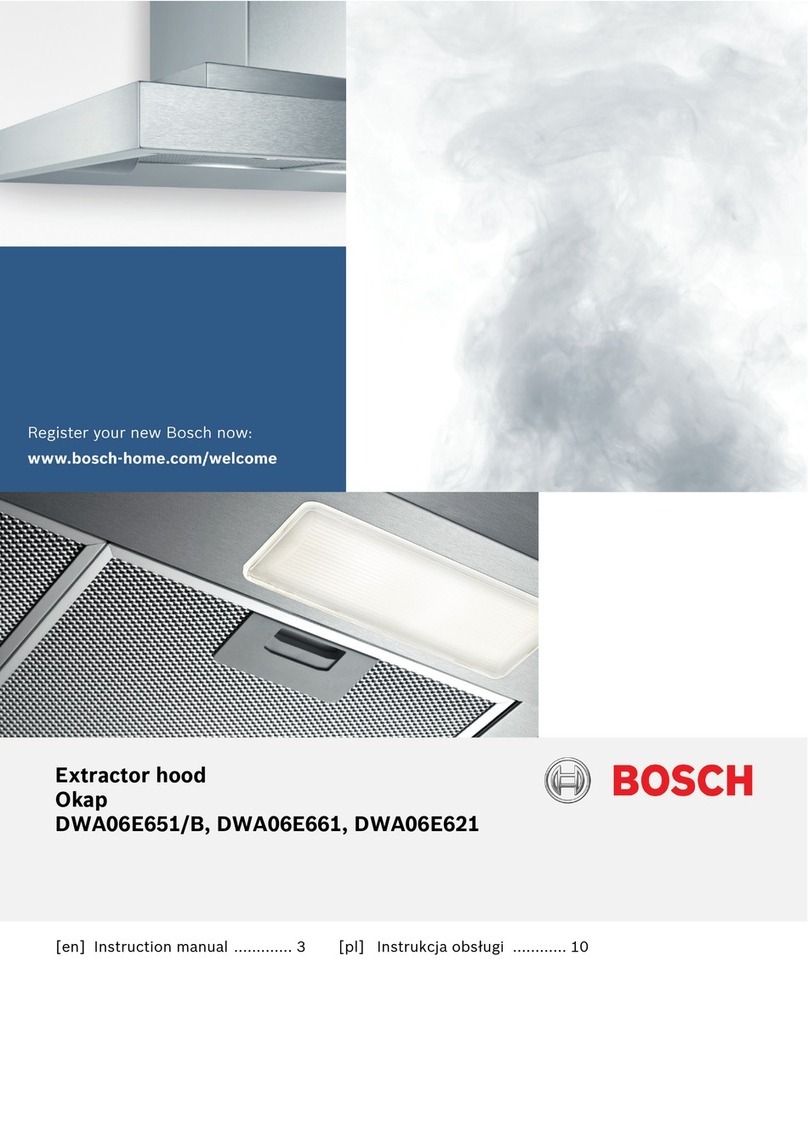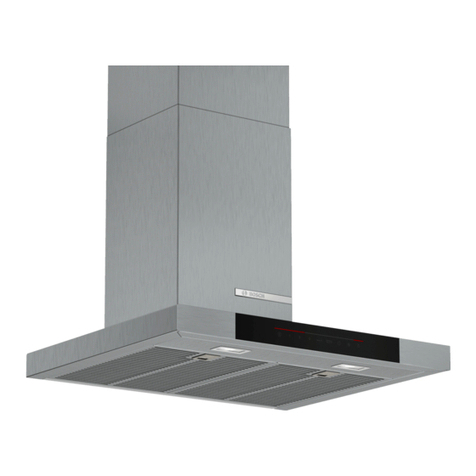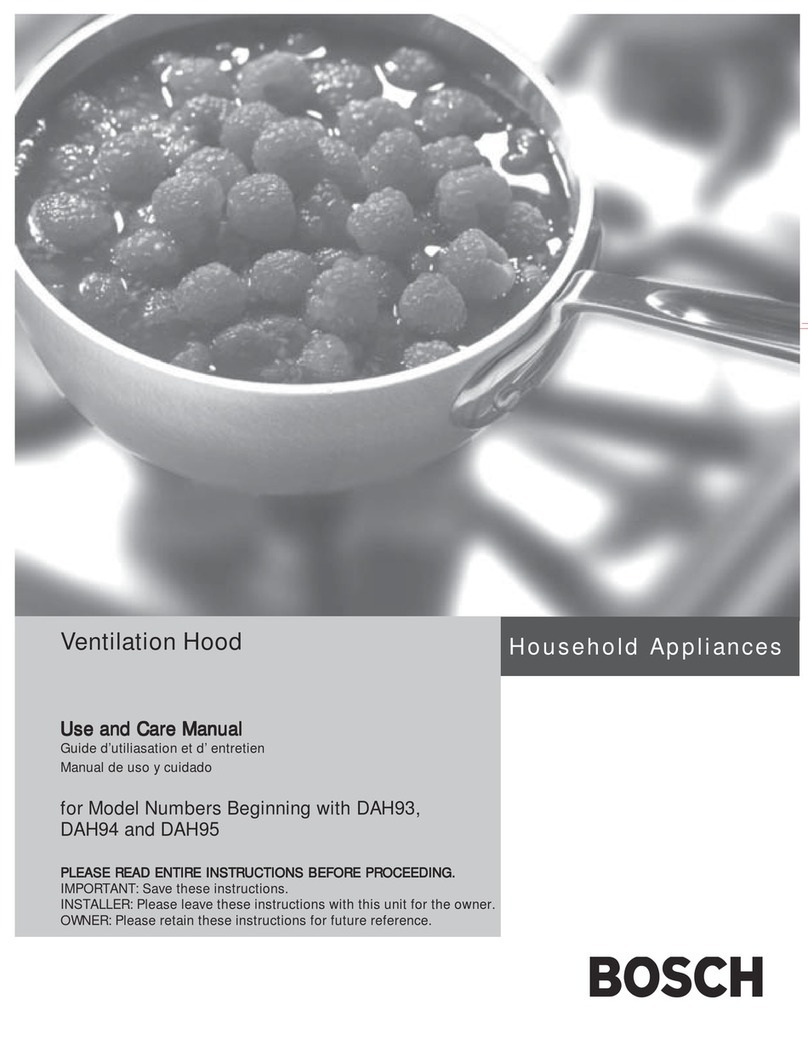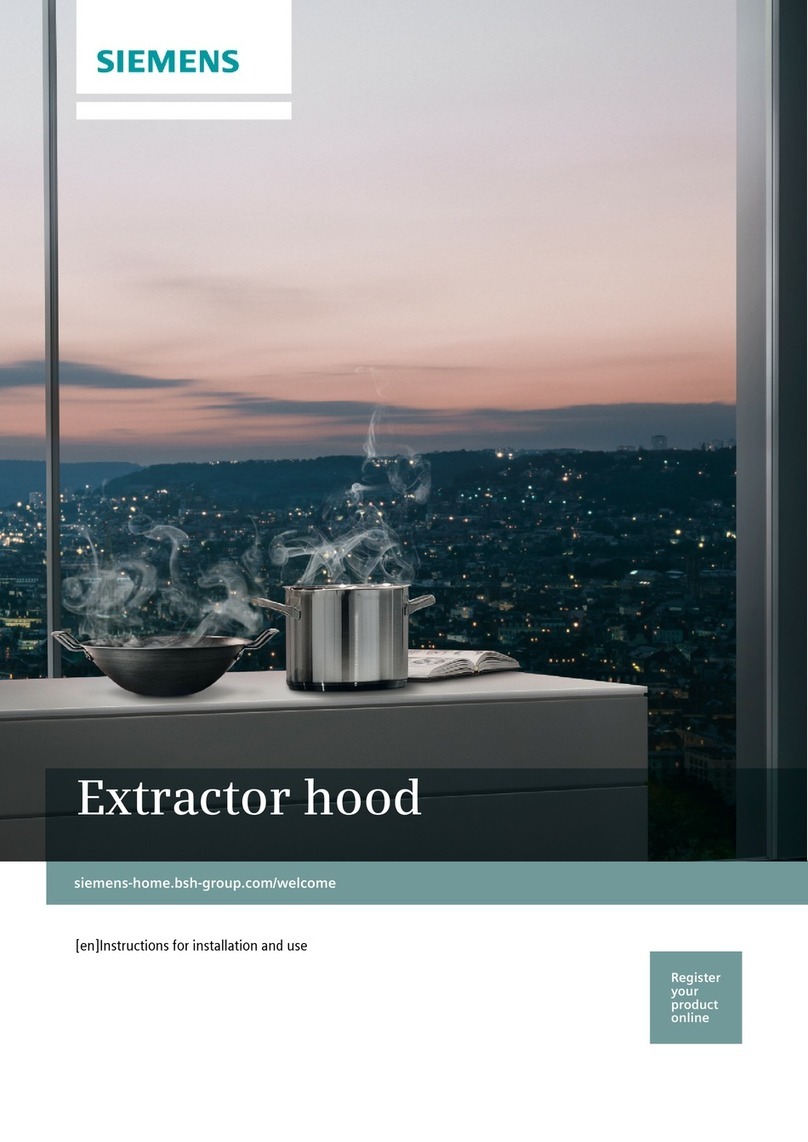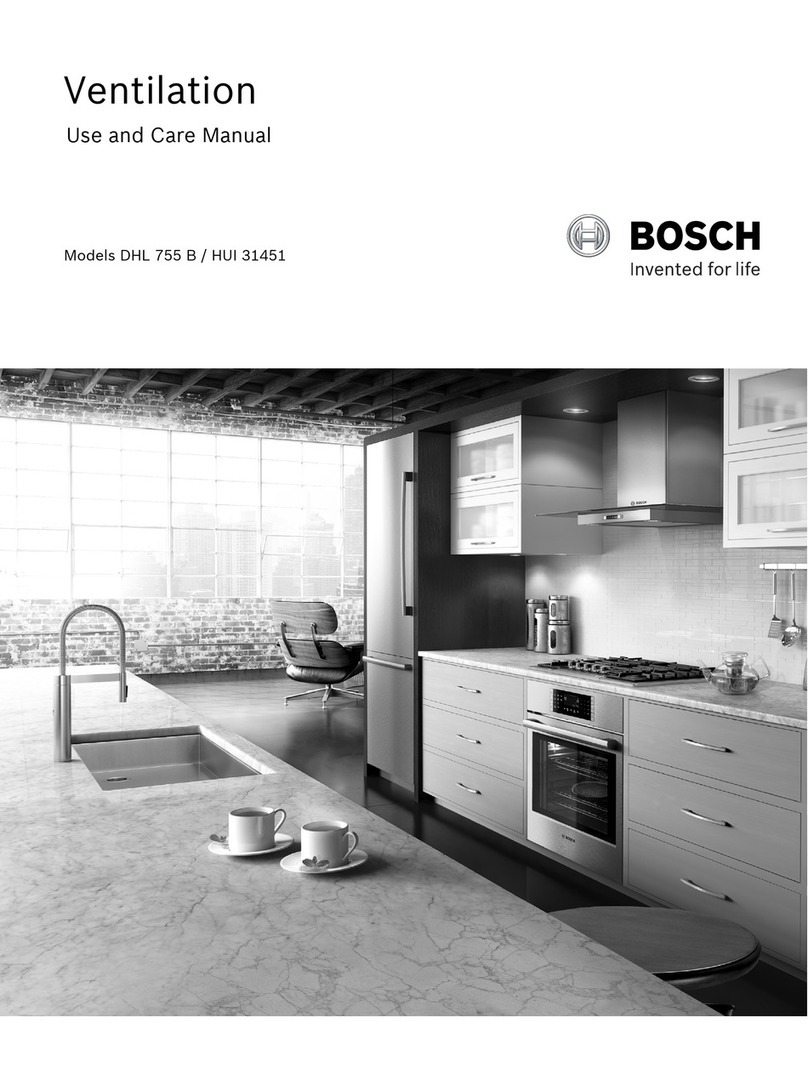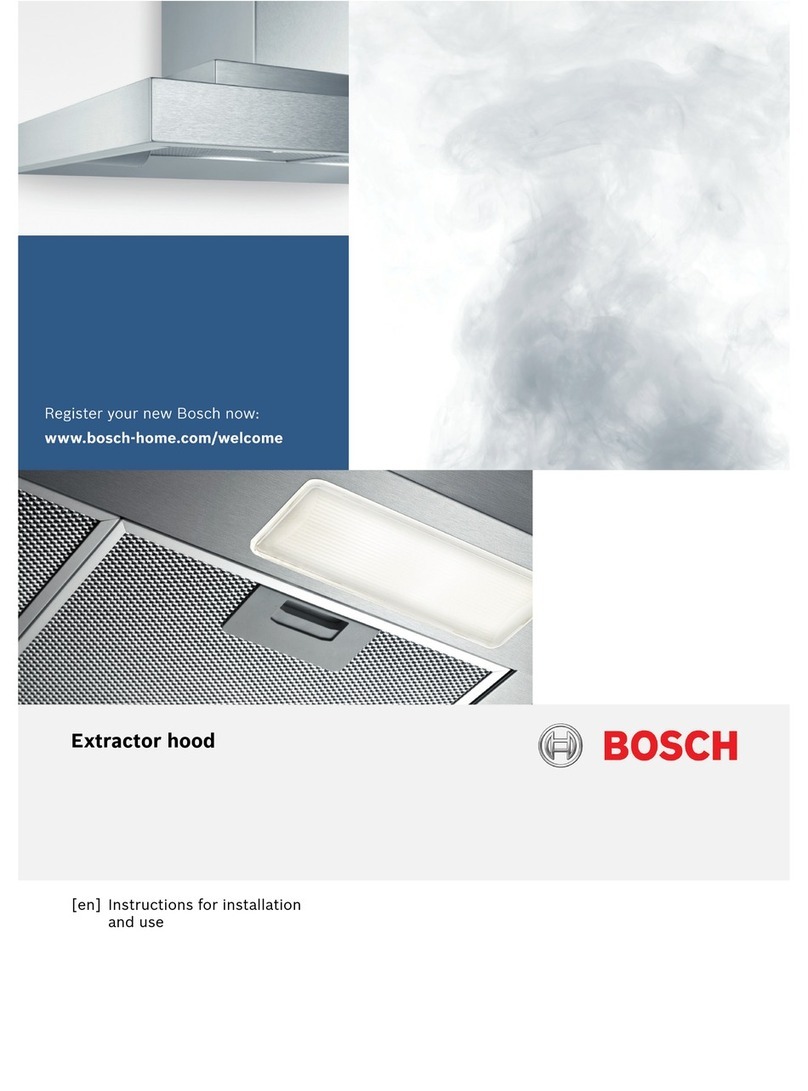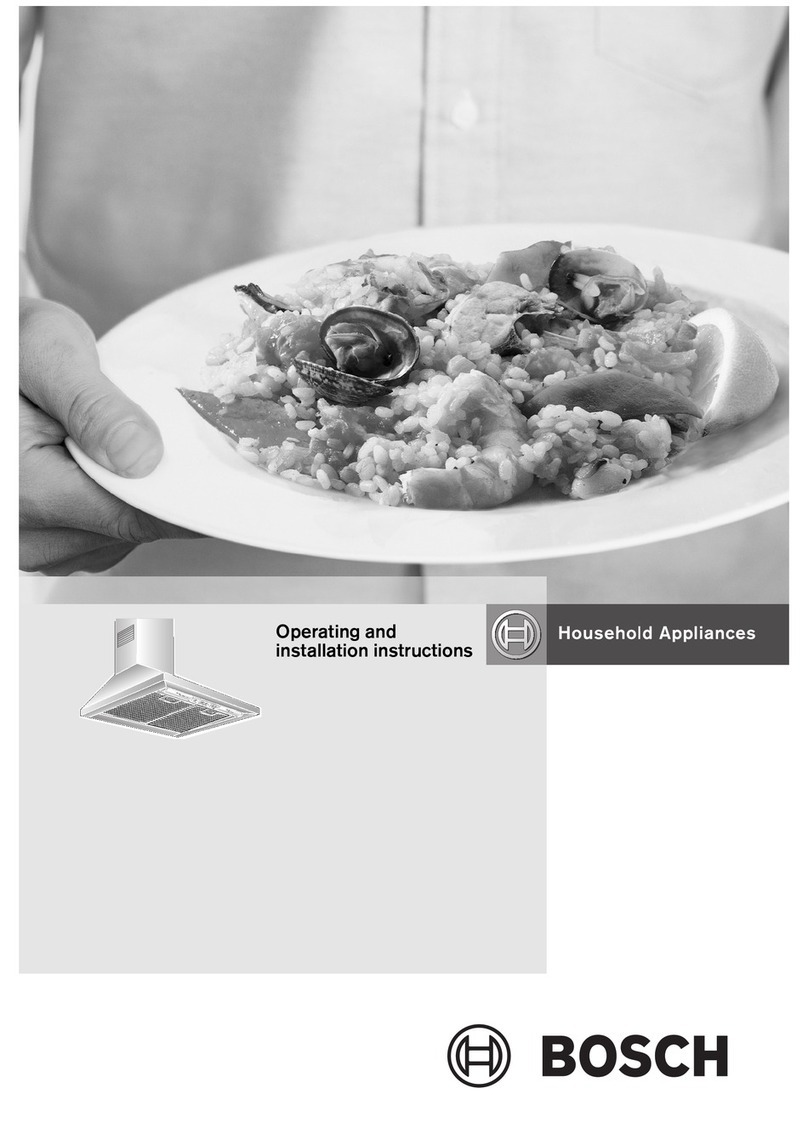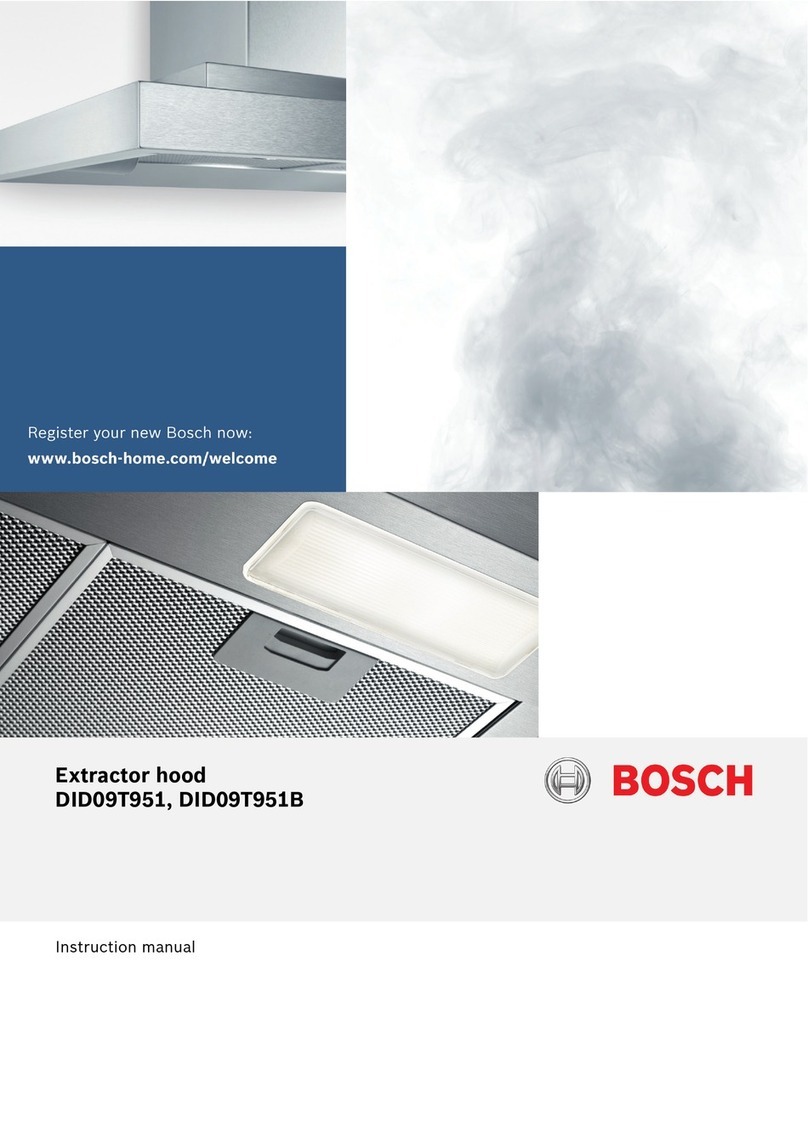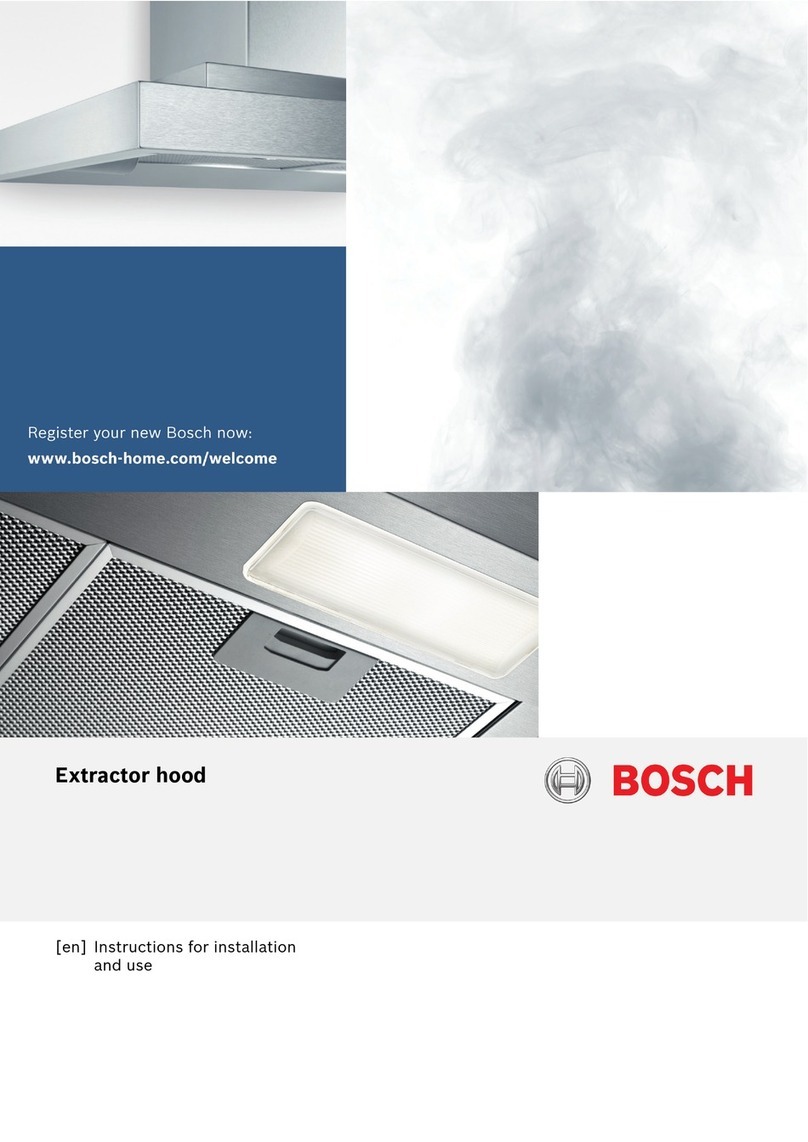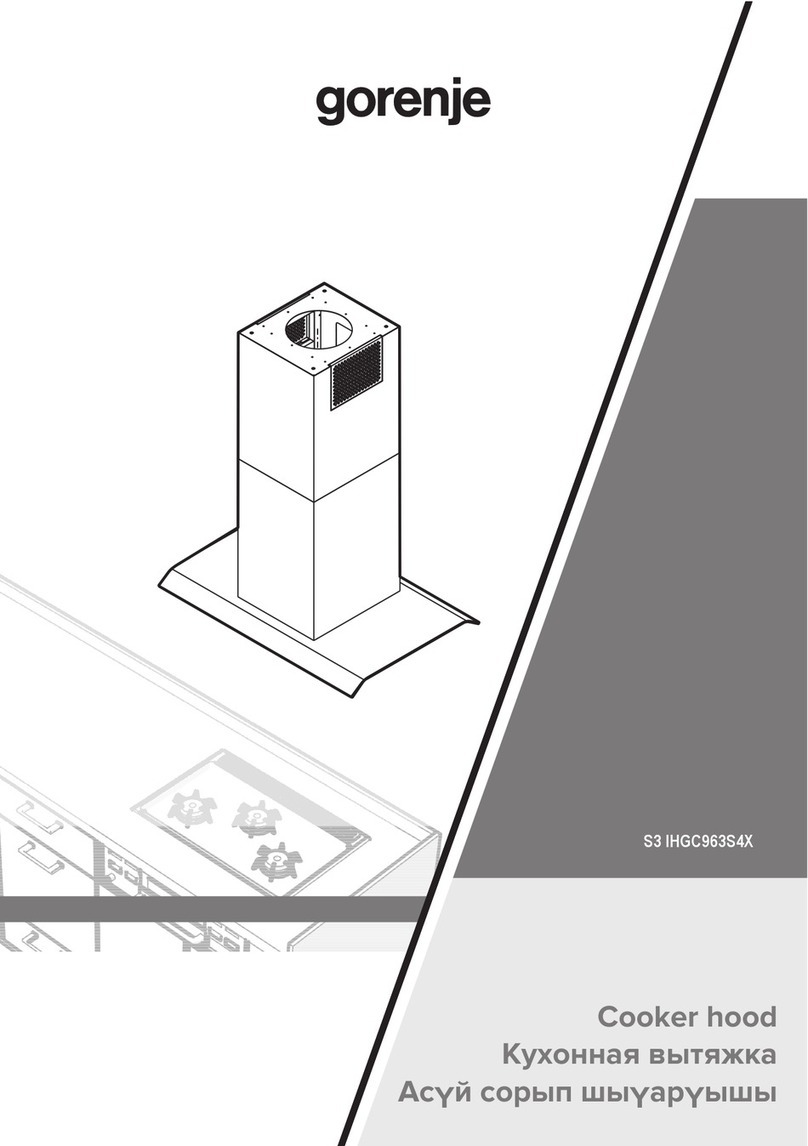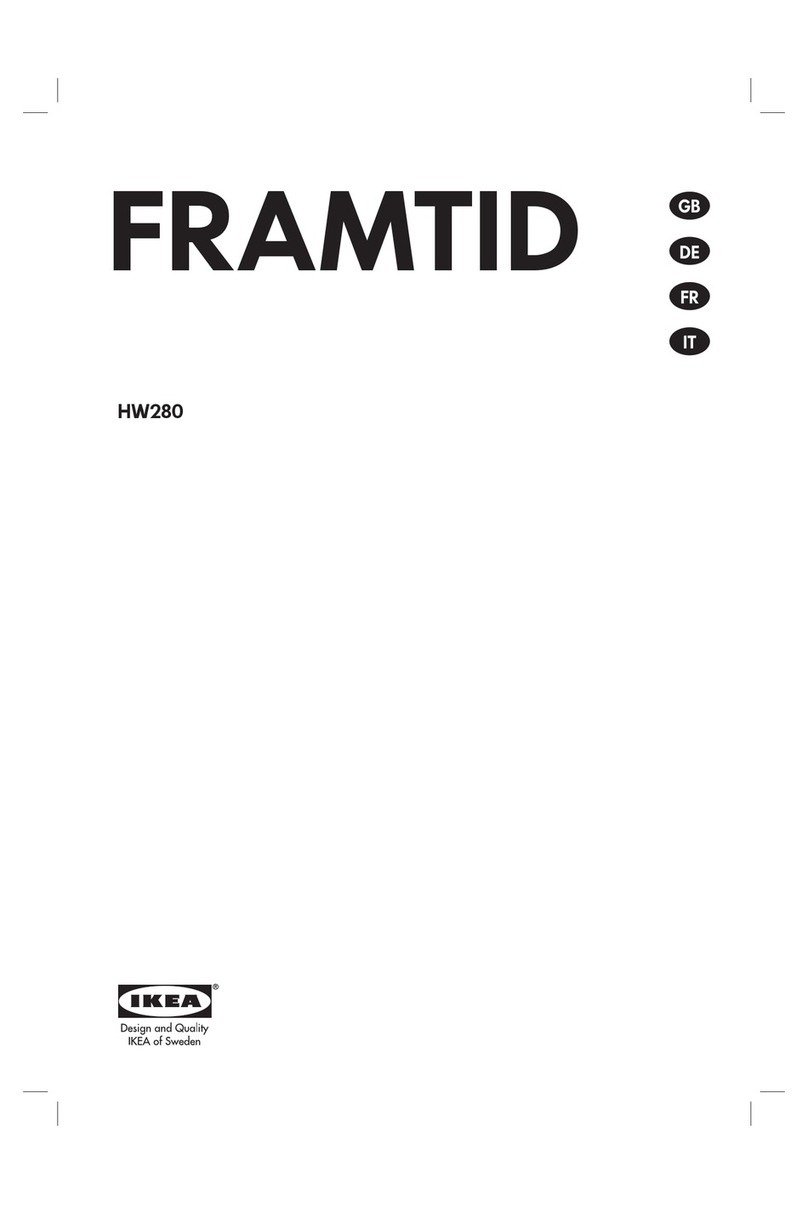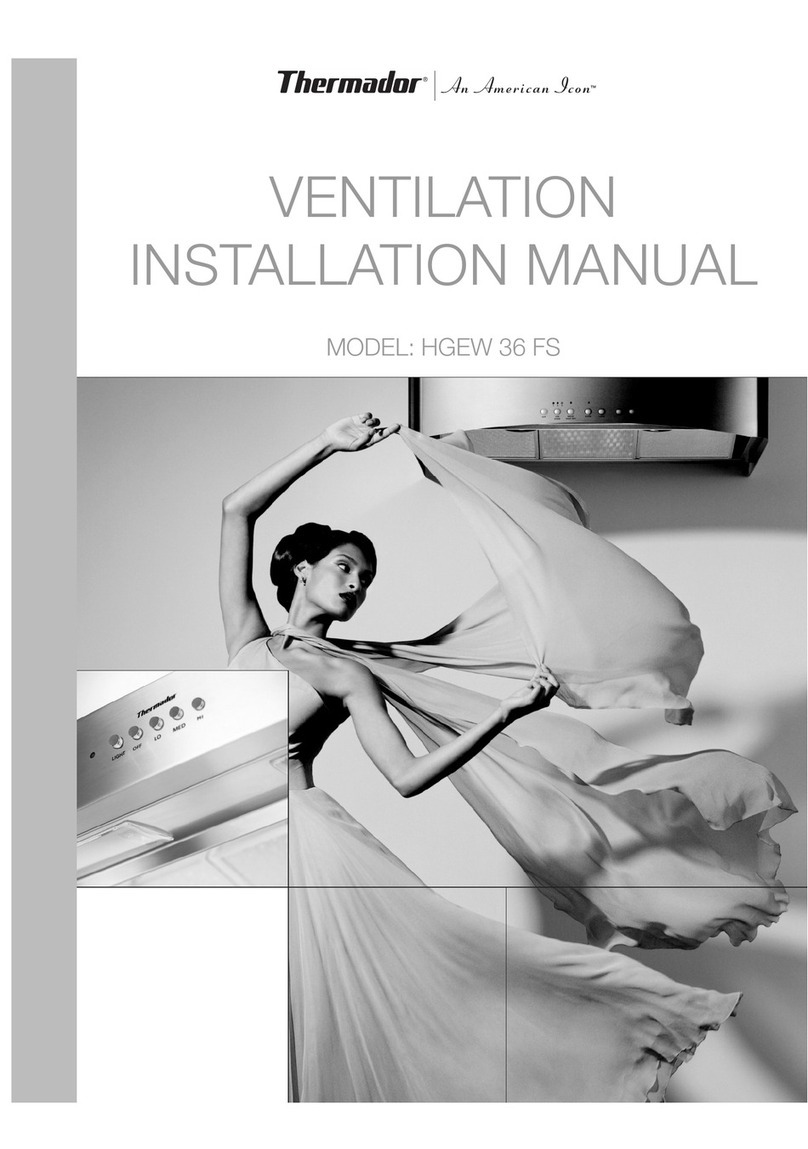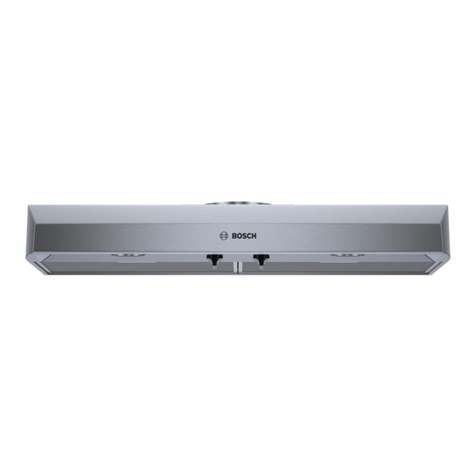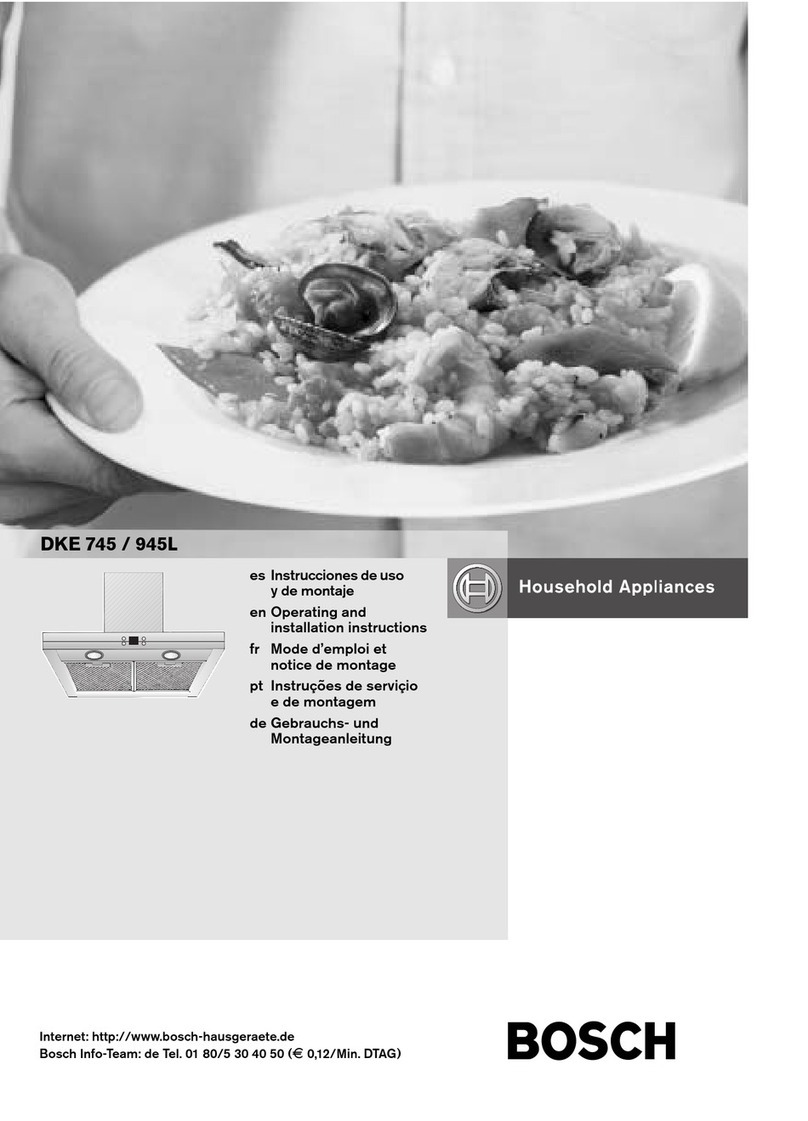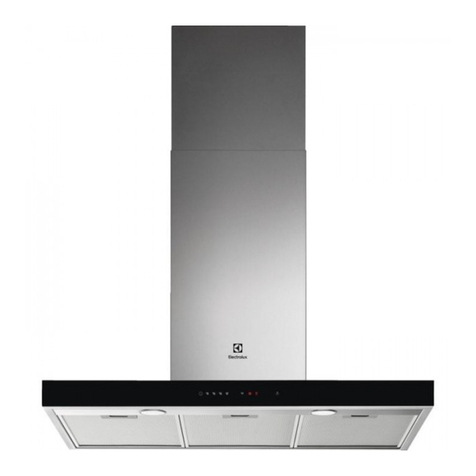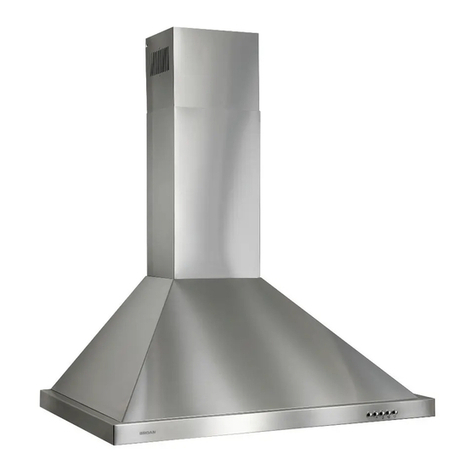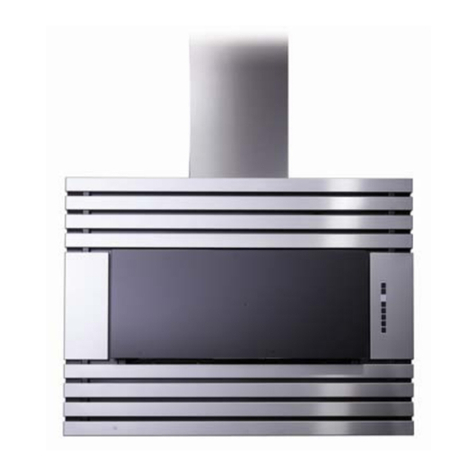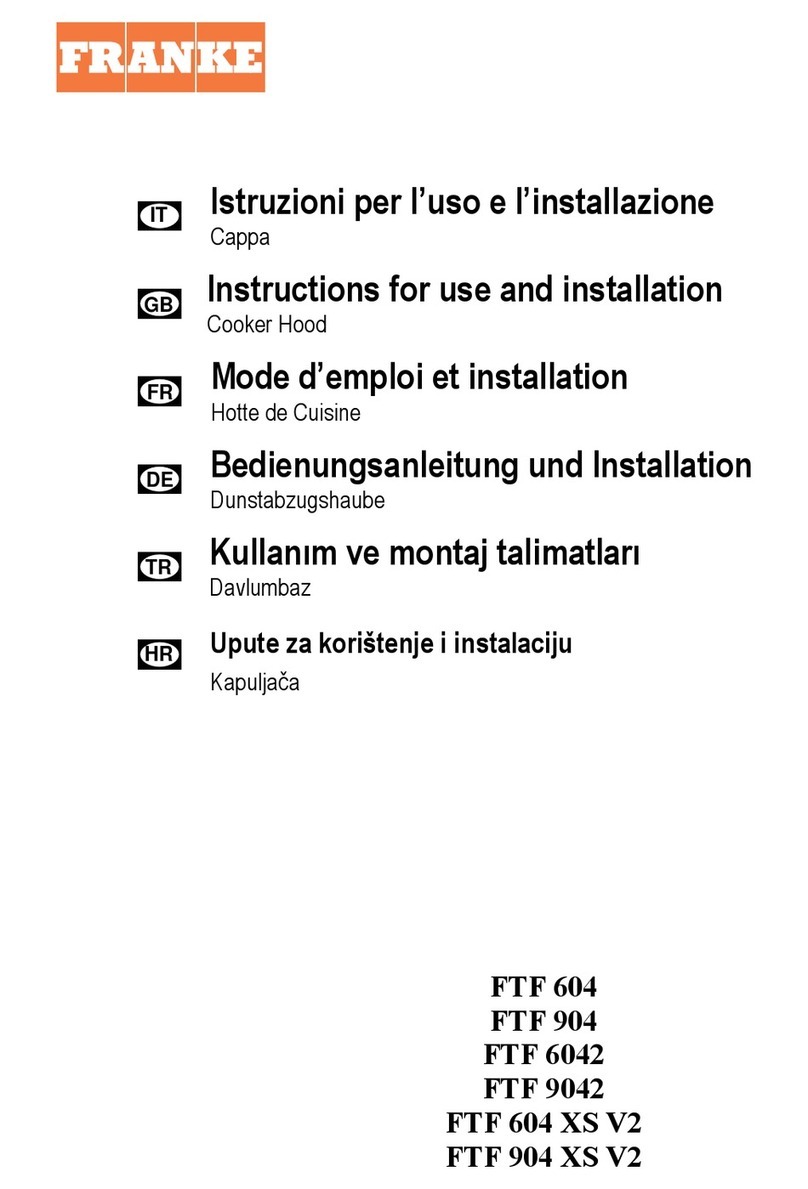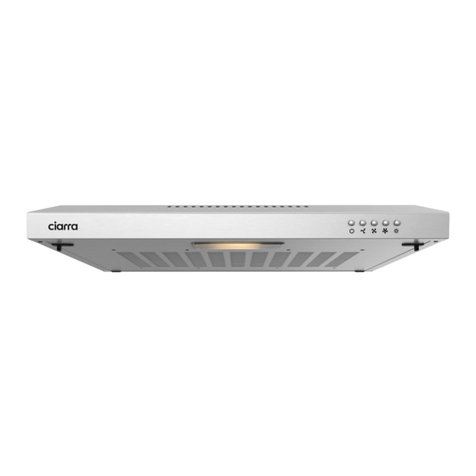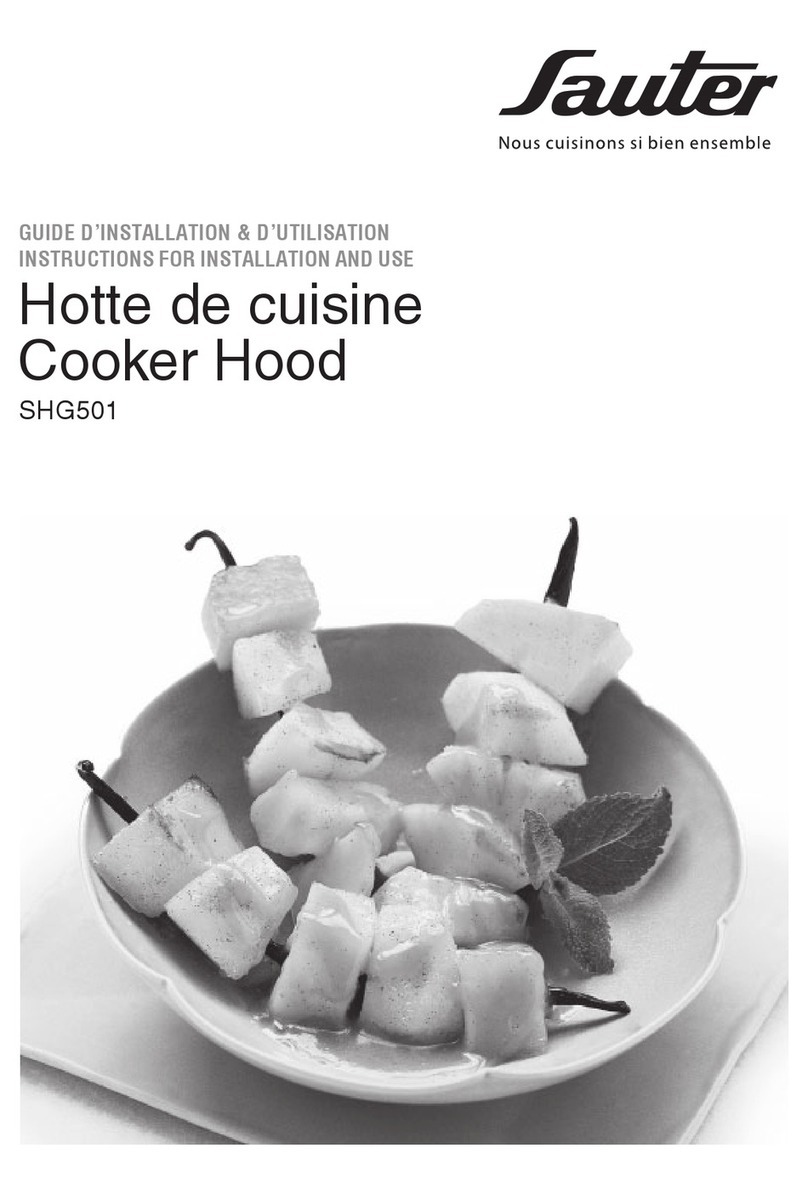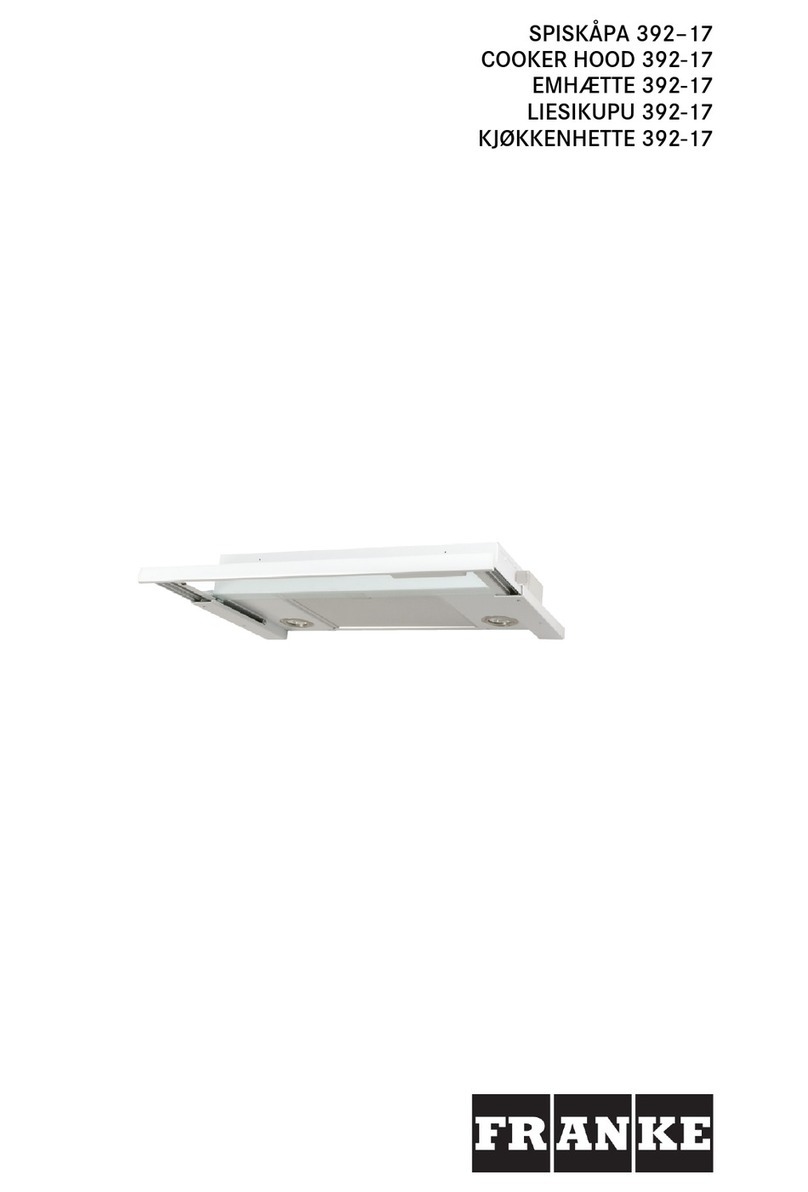
en
ÚInstallation instructions
: Important safety information
Read these instructions carefully. Only then will you be able to
operate your appliance safely and correctly. Retain the
instruction manual and installation instructions for future use or
for subsequent owners.
Check the appliance for damage after unpacking it. Do not
connect the appliance if it has been damaged in transport.
The appliance can only be used safely if it is correctly installed
according to the safety instructions. The installer is responsible
for ensuring that the appliance works perfectly at its installation
location.
The width of the extractor hood must correspond at least with
the width of the hob.
For the installation, observe the currently valid building
regulations and the regulations of the local electricity and gas
suppliers.
When conveying the exhaust air, official and legal regulations
(e.g. state building regulations) must be followed.
Danger of death!
Risk of poisoning from flue gases that are drawn back in.
Always ensure adequate fresh air in the room if the appliance is
being operated in exhaust air mode at the same time as room
air-dependent heat-producing appliance is being operated.
Room air-dependent heat-producing appliances (e.g. gas, oil,
wood or coal-operated heaters, continuous flow heaters or water
heaters) obtain combustion air from the room in which they are
installed and discharge the exhaust gases into the open air
through an exhaust gas system (e.g. a chimney).
In combination with an activated vapour extractor hood, room air
is extracted from the kitchen and neighbouring rooms - a partial
vacuum is produced if not enough fresh air is supplied. Toxic
gases from the chimney or the extraction shaft are sucked back
into the living space.
■Adequate incoming air must therefore always be ensured.
■An incoming/exhaust air wall box alone will not ensure
compliance with the limit.
Safe operation is possible only when the partial vacuum in the
place where the heat-producing appliance is installed does not
exceed 4 Pa (0.04 mbar). This can be achieved when the air
needed for combustion is able to enter through openings that
cannot be sealed, for example in doors, windows, incoming/
exhaust air wall boxes or by other technical means.
In any case, consult your responsible Master Chimney Sweep.
He is able to assess the house's entire ventilation setup and will
suggest the suitable ventilation measures to you.
Unrestricted operation is possible if the vapour extractor hood is
operated exclusively in the circulating-air mode.
Risk of death!
Risk of poisoning from flue gases that are drawn back in. The
exhaust air must not be conveyed into a functioning smoke or
exhaust gas flue or into a shaft which is used to ventilate
installation rooms that contain heating appliances. If the exhaust
air is to be conveyed into a non-functioning smoke or exhaust
gas flue, you must obtain the consent of the heating engineer
responsible.
Danger of suffocation!
Packaging material is dangerous to children. Never allow
children to play with packaging material.
Risk of electric shock!
■Components inside the appliance may have sharp edges.
These may damage the connecting cable. Do not kink or
pinch the connecting cable during installation.
Risk of electric shock!
■It must always be possible to disconnect the appliance from
the electricity supply. The appliance must only be connected
to a protective contact socket which has been correctly
installed. If the plug is no longer accessible following
installation of the appliance, or a fixed connection is required,
an all-pole isolating switch must be present on the installation
side with a contact gap of at least 3 mm. The fixed connection
must only be installed by an electrician.
Risk of fire!
■Grease deposits in the grease filter may catch fire. The
specified safety distances must be observed in order to
prevent an accumulation of heat. Observe the specifications
for your cooking appliance. If gas burners and electric
hotplates are operated together, the largest specified distance
applies.
Risk of fire!
■Grease deposits in the grease filter may catch fire. Never work
with naked flames close to the appliance (e.g. flambéing). Do
not install the appliance near a heat-producing appliance for
solid fuel (e.g. wood or coal) unless a closed, non-removable
cover is available. There must be no flying sparks.
Risk of injury!
■Components inside the appliance may have sharp edges.
Wear protective gloves.
Risk of injury!
■The appliance may fall down if it has not been properly
fastened in place. All fastening components must be fixed
firmly and securely.
Risk of injury!
■The appliance is heavy. To move the appliance, 2 people are
required. Use only suitable tools and equipment.
Risk of injury!
■Changes to the electrical or mechanical assembly are
dangerous and may lead to malfunctions. Do not make any
changes to the electrical or mechanical assembly.
General information
Exhaust air mode
Note: The exhaust air must not be conveyed into a functioning
smoke or exhaust gas flue or into a shaft which is used to
ventilate installation rooms which contain heat-producing
appliances.
■Before conveying the exhaust air into a non-functioning smoke
or exhaust gas flue, obtain the consent of the heating
engineer responsible.
■If the exhaust air is conveyed through the outer wall, a
telescopic wall box should be used.
Exhaust duct
Note: The appliance manufacturer does not assume any
warranty for complaints attributable to the pipe section.
■The appliance achieves its optimum performance by means of
a short, straight exhaust air pipe and as large a pipe diameter
as possible.
■As a result of long rough exhaust air pipes, many pipe bends
or pipe diameters that are smaller than 150 mm, the optimum
extraction performance is not achieved and fan noise is
increased.
■The pipes or hoses for laying the exhaust air line must consist
of non-combustible material.
Risk of damage from returning condensate. Install the exhaust
duct in such a way that it falls away from the appliance slightly
(1° slope).
Round pipes
An inner diameter of 150 mm, but at least 120 mm, is
recommended.
Flat ducts
The inner cross-section must correspond to the diameter of the
round pipes.
dia. 150 mm ca. 177 cm2
dia. 120 mm ca. 113 cm2
■Flat ducts should have no sharp deflections.
■Use sealing strip for deviating pipe diameters.


